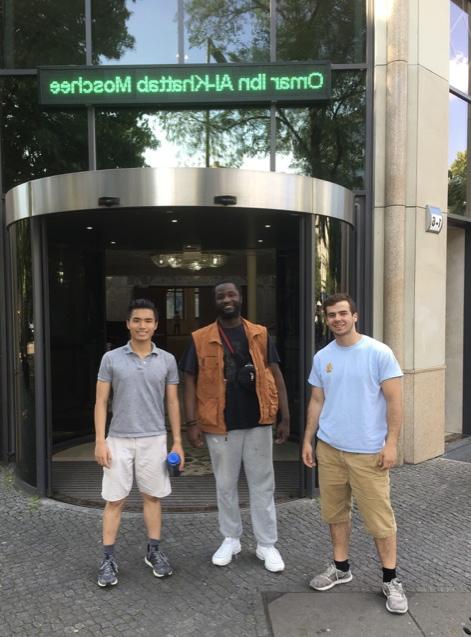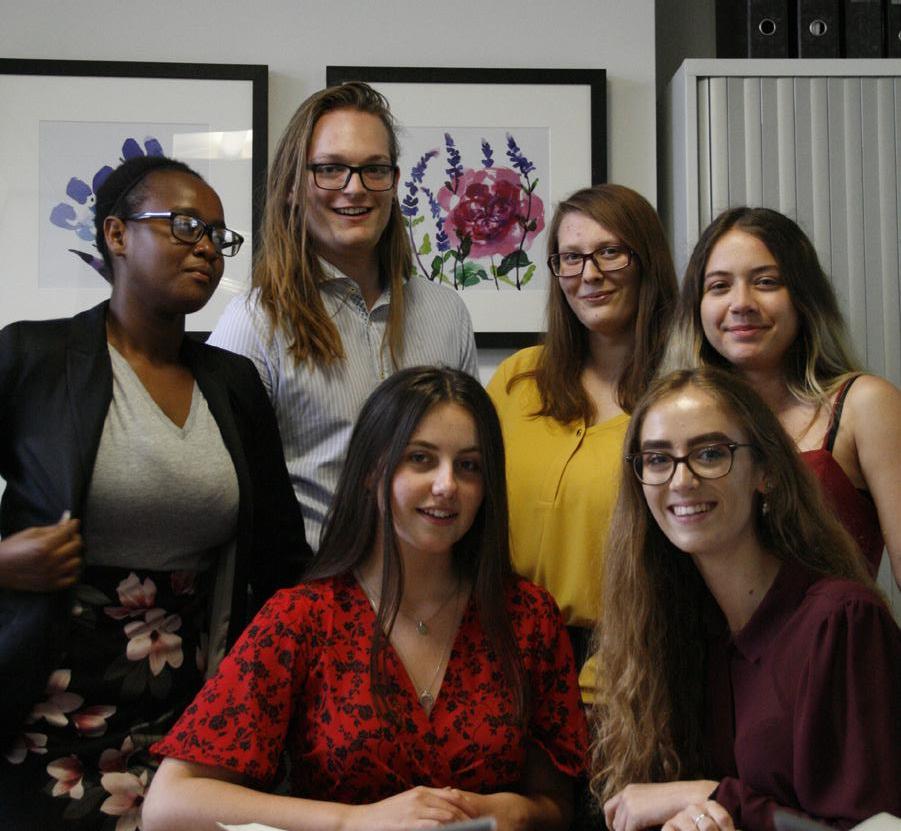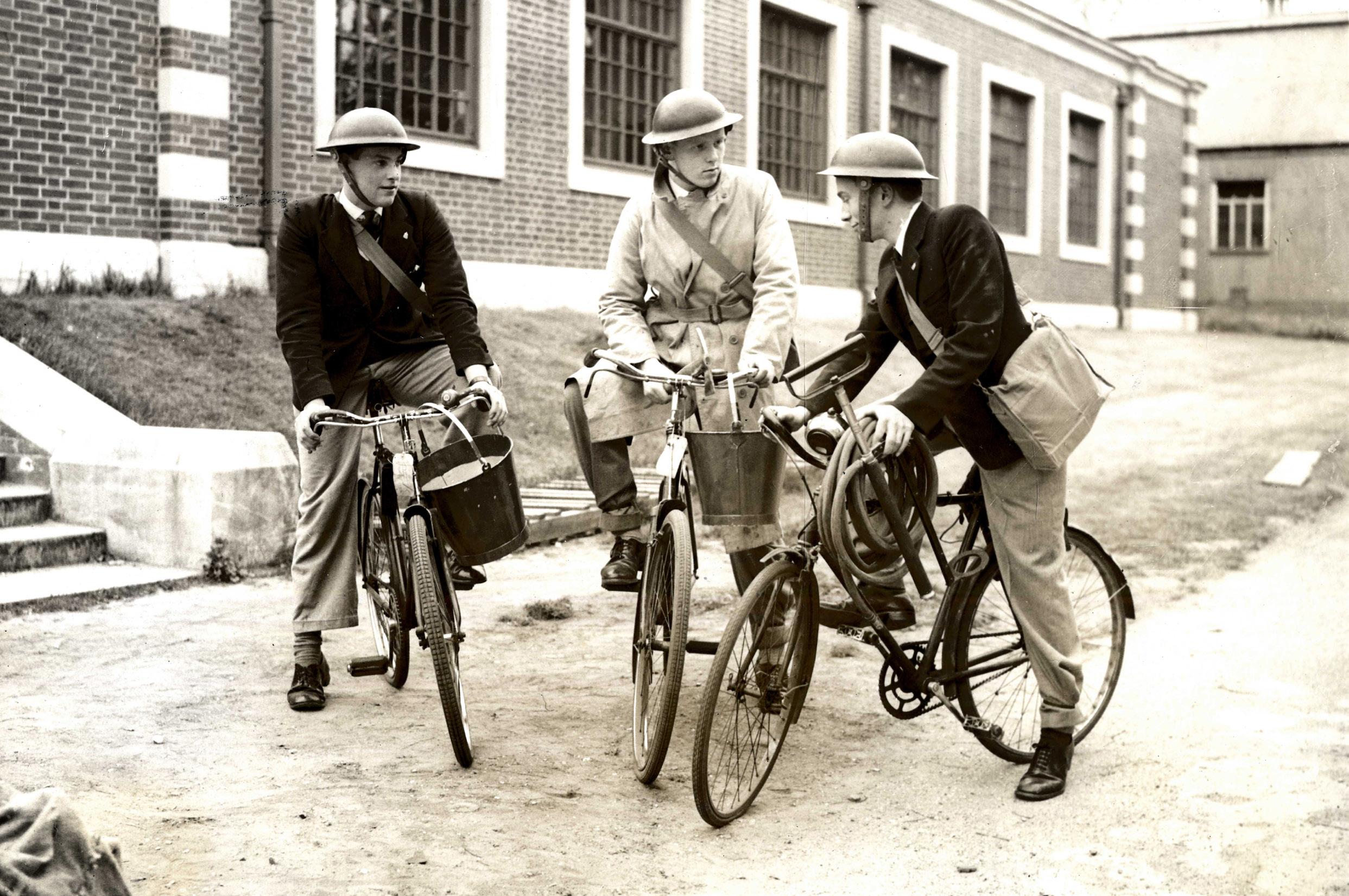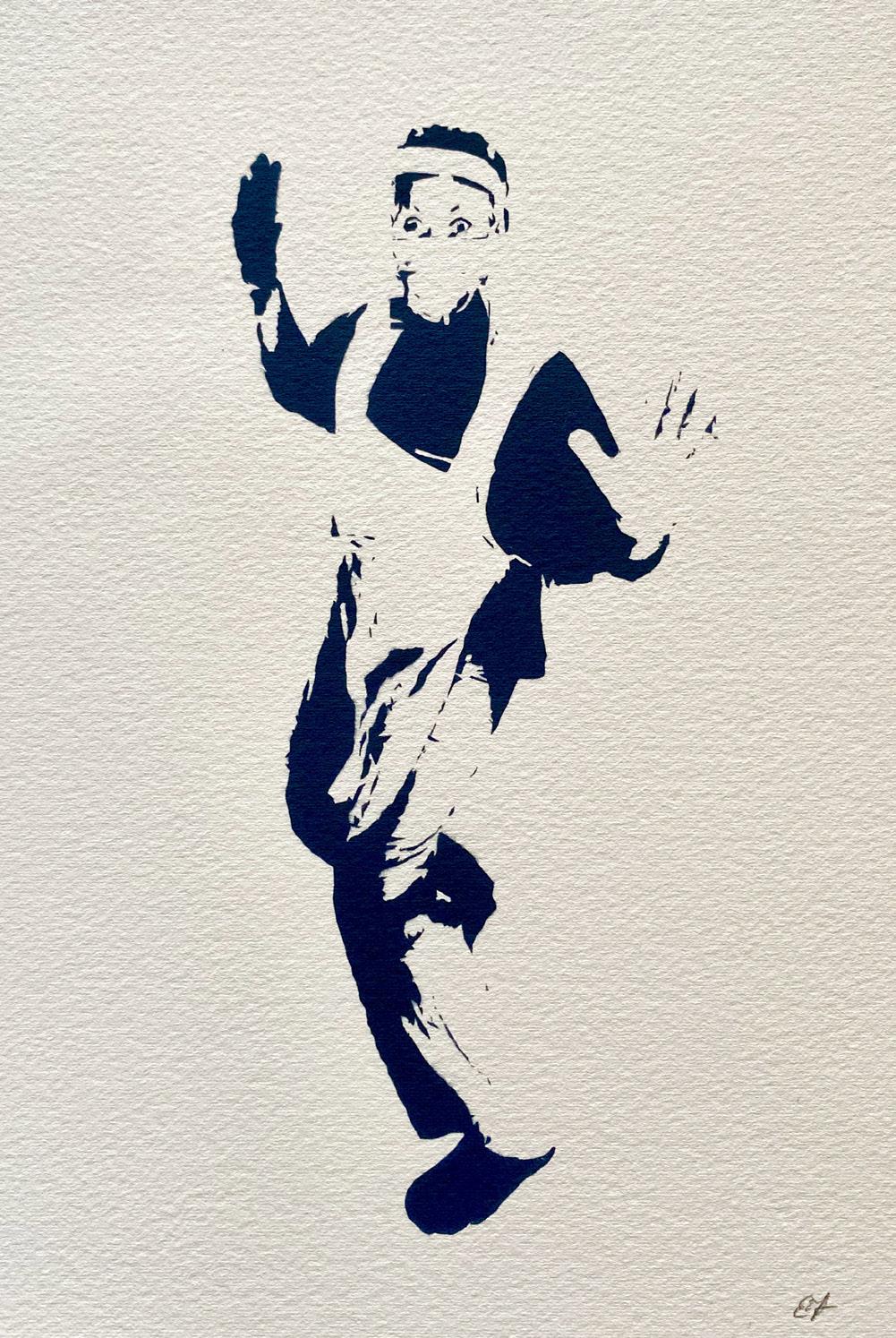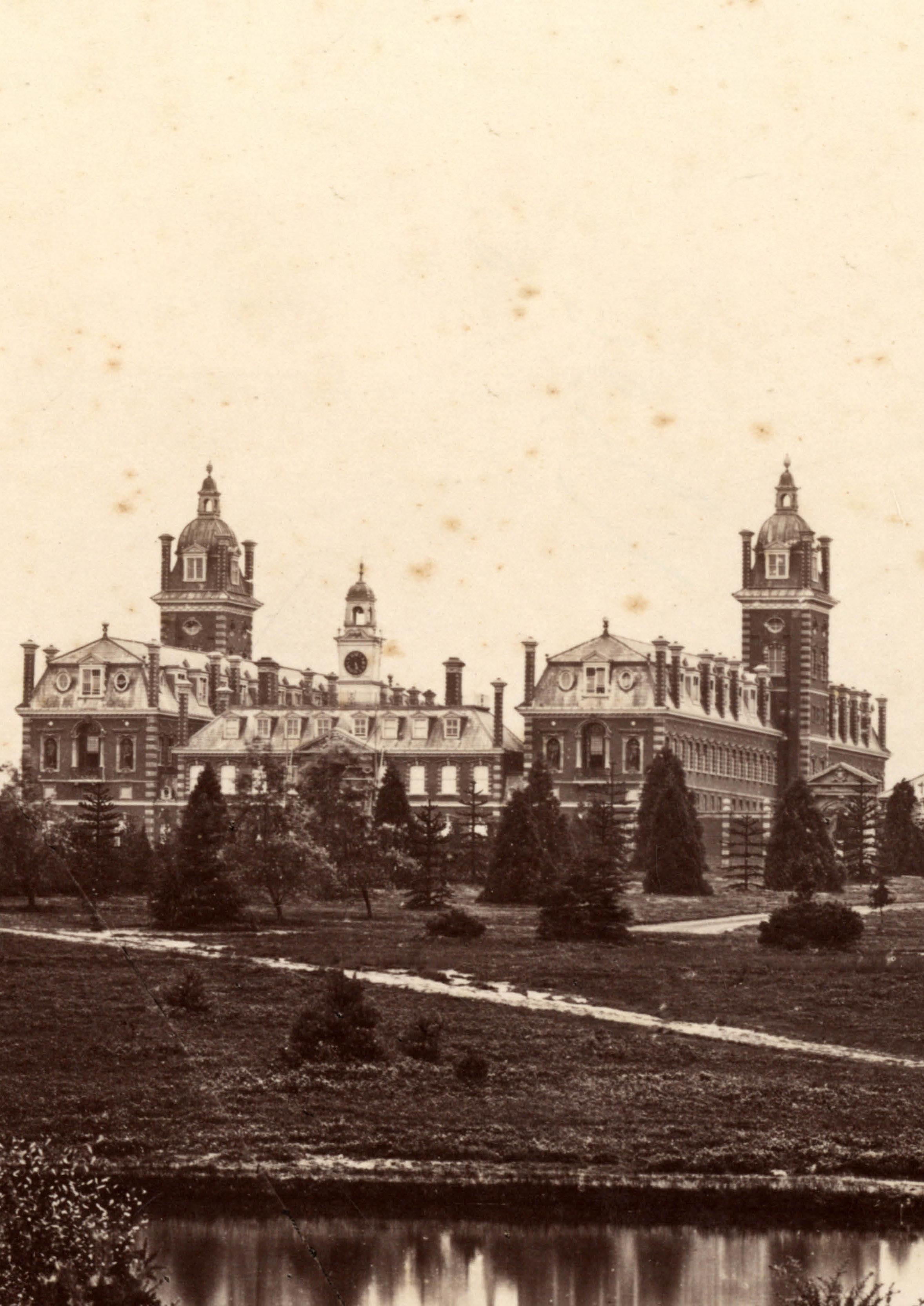
25 minute read
The Arts
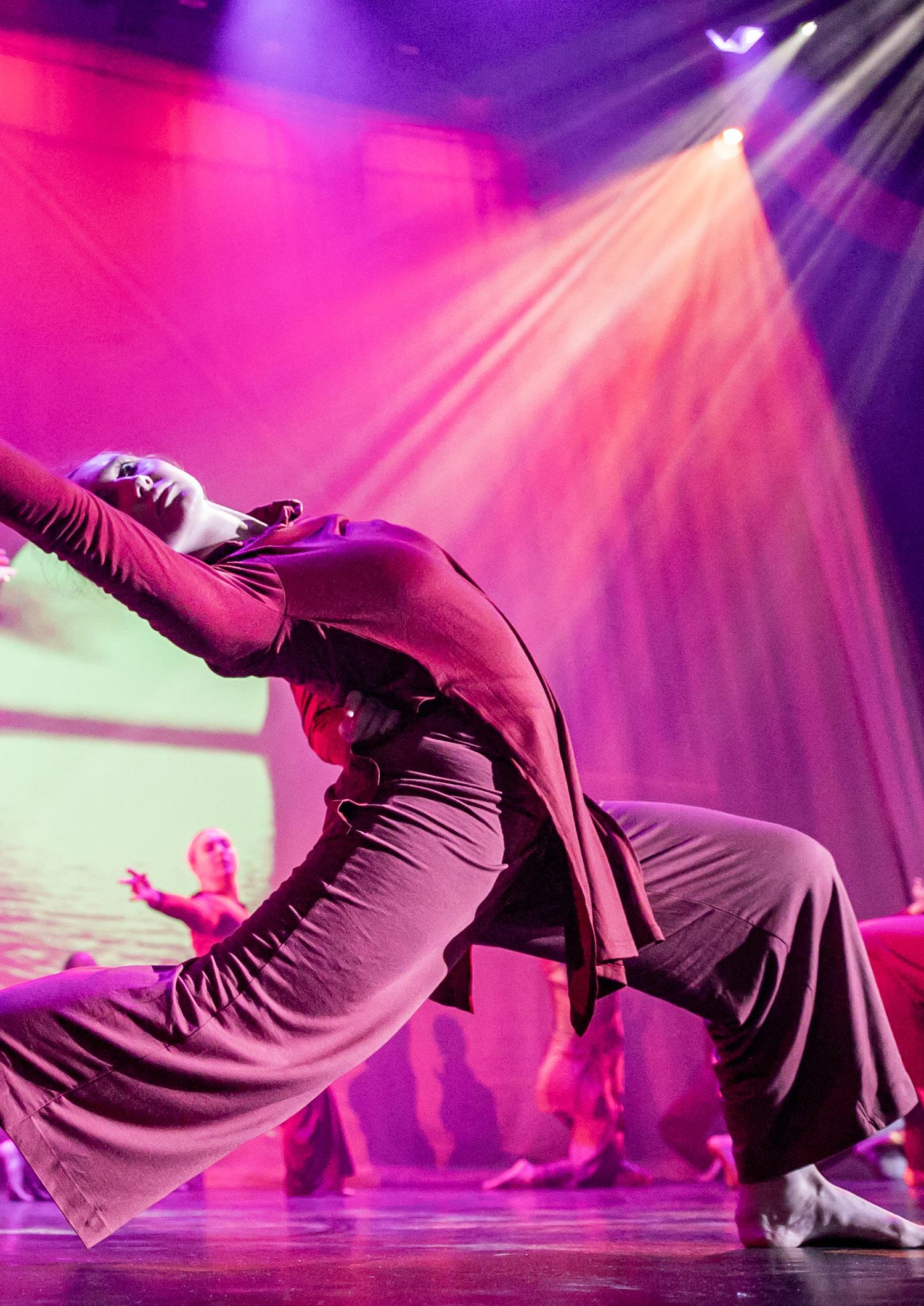

Advertisement
At the beginning of September 2019, we had a technical meeting to review which events to stream to parents in the GWA, focusing on House Competitions and then thinking about concerts. We decided that we were uncertain how many parents would opt to view in this way, preferring to encourage our audience into the theatre/concert hall to experience what we consider to be the best form of entertainment — that is live events with students on stage performing. Indeed, when Sweeney broke through the 4th wall in that wonderful production of Sweeney Todd back in February, we were all gripped by the drama and were at one with his feelings — I do not think this would have been experienced in the same way via video link.
I say this now, after a most unbelievable explosion of virtual activity at Wellington. Plays, concerts, and dance, all presented on a screen, have changed the way we view performances this summer, yet we are desperate to return to experience live events. The House Competitions this year were tremendous — House Dance was a huge success, with such variety; the House Singing competition was a prelude to Glastonbury celebrating their 50th year, with the whole school involved, and the House Drama promised to be one of the most keenly fought finals in its history. We welcomed a new House competition — the House Ensemble, and this proved to be very popular in lockdown.
The Third Form have continued to take part in the Arts Award programme, and now all students who entered the school in Year 9 should have passed Arts Award Bronze, making about a thousand students with this qualification. My original aim was to try and encourage a life-long love of the arts and to expand students’ appreciation. Arts Award Bronze is split into four areas: students learn to appreciate an arts activity; they review an arts event; they present upon an artist that inspires them; and they teach one of their friends an artistic skill. This simple structure allows the students to take control of what they are learning and, under the guidance of a teacher, can develop their interest.
Back in October, Wellington put on its first Welly Fringe. Held over two days, it allowed students (and staff) to put on small-scale events within the core buildings of the school. Art seemed to be everywhere, from Chapel to Waterloo Hall, and even in the colonnades of the Combermere Quad. We allowed DJing in the Old Gym, bands playing in supper, and concerts in The Master’s Lodge, and even in the Benson and the Combermere. Poetry was performed, Dance and Physical Theatre took place, and the Crypt was opened up to Art and to performance. Small plays took place, films of plays were shown, and on one of the evenings the sound of the Sixth Form scholars’ choir could be heard as they performed under the tree in the Combermere Quad. We hope that this activity will develop to allow students to express themselves more in future years.
In December, the Art Department organised a wonderful evening featuring parents, OWs, and local businesses discussing careers in the Arts. We welcomed over 50 students from local schools and hope the evening inspired them to consider the many different facets of the Arts, as it inspired us.
Every year, we award Arts Colours to students in the Sixth Form, and we were delighted to award 48 students in the Upper Sixth with Colours in all branches of the Arts. Thank you to all Upper Sixth for their commitment over the year, and particularly in the work in the Summer Term with remote activities. Thank you also to a wonderful team of teachers and technicians who keep the Arts very much alive and kicking at Wellington, whatever the climate.
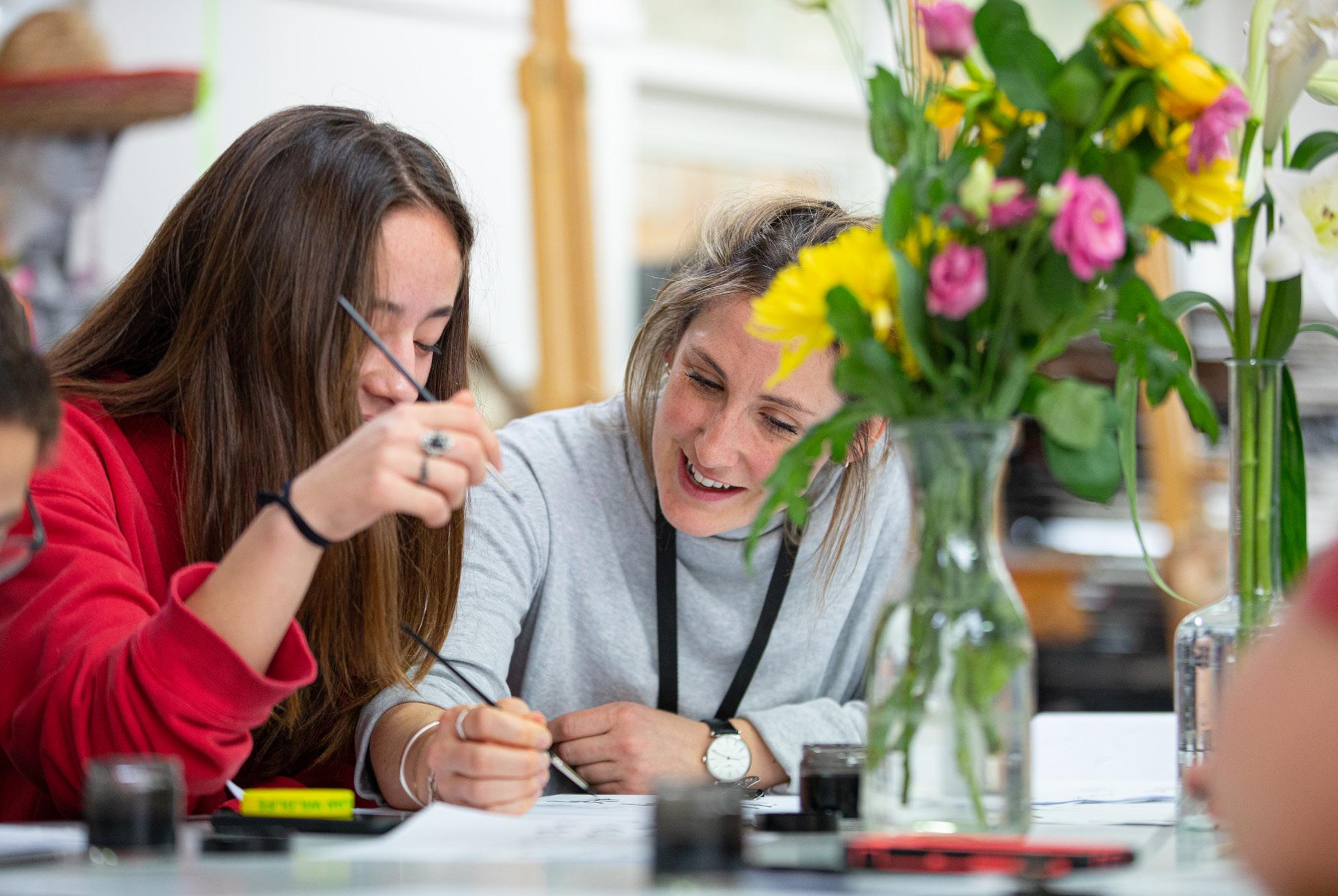
Art
In February, the Art Department opened its doors to the College community for our mental health awareness day. Art teachers offered a plethora of mindful art activities, from calligraphy to clay pot making. The feedback was unequivocally positive, and we look forward to building on these workshops next year. There is a place for mindfulness in every home, and it is an incredibly important time to refuel creativity both individually and collectively.
Wellington College is committed to celebrating the huge contribution that art makes to the cocurricular life of the school. There has been a tremendous amount of enthusiasm for masterclasses put on throughout the year. Our pupils have participated in life-drawing classes, oil painting masterclasses, a ceramics and sculpture enrichment programme, as well as fashion and textile workshops with industry professionals. The popular Parental Art Masterclasses that take place in the Michaelmas Term are now in their second year. Parents have joined different members of the Art Department to learn new skills, ranging from glass fusing, calligraphy, and bookbinding to portrait painting, as well as a tour of the College architecture.
The annual House Art competition in the Michaelmas Term saw a variety of ambitious and inspired entries, with an array of creative talent on display. The theme of ‘Sequences, Structures, and Shapes’ encouraged an exploration of links between art, mathematics, and geometry. Students responded through media ranging from sculpture and painting, to coding and installation. We were impressed by the ingenuity displayed and the level of research undertaken by all involved. Special commendation must go to the Heads of Houses and Art Reps who led their respective student bodies outstandingly. It was an incredibly difficult year to judge, and once all votes were counted 1st place was awarded to the Stanley for their clever optical installation, whilst the Wellesley achieved a strong 2nd for their ambitious sculptural outcome. A special Lower School commendation was awarded to the Hill for the excellent contributions from their Third and Fourth Forms. The whole community participated in our second House Art competition during the disrupted Summer Term, which asked participants to use their design and artistic skills, exploring how repurposing or adapting an existing object can encourage alternative views of the world.
Our exhibition programme has grown with each term, and the walls around the College are always decorated with exceptional art from our students. In February, the Art Department hosted an Inspire Morning, a chance for some younger students soon to arrive at Wellington to participate in a series of exciting workshops. The work was so impressive that we decided to show it in the V&A in the exhibition ’Inspired‘. Over Michaelmas, the GWA showcased the exceptional work produced by our Textiles students. Toiles, prints, dramatic costumes, and sensational dresses adorned the steps and walls of the Cultural Living Room. This was a truly engaging and exceptional display of work and a recognition of the artistry and skill our students dedicate to their practice. Our annual GCSE exhibition filled the V&A in the latter half of the Michaelmas Term. Paintings, photographs, wall hangings, and ceramics brought colour and vibrance to the school’s popular social hub. We continue to develop student leadership within the Arts, and we are delighted to announce that we will be working in collaboration with students to plan the exhibition programme in the academic year.
Life drawing sessions ran weekly through the Michaelmas Term, allowing all students to learn new skills and develop their observational recording technique. With a focus on proportionally accurate drawing, attendees made consistent progress in their technical abilities. Each week saw demonstrations using new media, and pupils had the chance to work with pastels, develop their aptitude for fashion illustration, and create their own papercuts inspired by Matisse. The life drawing Enrichment was also accessible to students from our ISSP schools, and all students left with a range of proficient artworks for their portfolios. We aim to continue to offer these excellent opportunities to Wellington College Art students, local state schools, and our partner schools. Our Careers Evening in October was a huge success, attended by our own students and over one hundred state school pupils and their parents.
A keen and talented group of Third Form artists have been meeting regularly in the Art School as part of our extension programme this year. Pupils have been busy working on a variety of tasks: exhibition reviews, drawing interiors in the style of Giacometti, still-life oil painting workshops, and etchings inspired by Jim Dine to name a few. Recently some of the pupils have submitted some fantastic work to the ‘Royal Academy Young Artists Summer Exhibition’ — watch this space! There has been fantastic enthusiasm for the painting and drawing masterclasses put on throughout the year by Mr Wardlaw. Students from all years worked together in the studio to paint from a model and learn the techniques of traditional portrait painting in oil, as used by artists from Velasquez to Sargent. It has been wonderful to see these skills feeding back into the students’ academic artwork. The Third Form enjoyed their own extension masterclasses, learning the art of still life painting and showed just how much talent there is coming through the school.
More recently our Third Form artists were invited to design and illustrate the front cover of a book they had studied this year. The top entries, by Duncan Stewart (Bd) and Nikki Carcelle (Hl), will be exhibited in the library upon returning to school. Nikki’s cover of The Tempest was very dramatic and created a wonderful sense of movement. The Head of English, Ms Gutulan, noted that the way in which he captured the fury of the storm with such impressive virtuosity could be published on the cover of a new edition of the play. Our Head Librarian, Mrs Atherton, was very impressed with Duncan’s cover for The Sign of the Four, and he brought the characters to life in his illustration by thinking about the historical time frame in which the story is set. All the entries showed real engagement with the books on both a literary and an artistic level, and it is so pleasing to see that the future of Wellington Art is in such good hands.
Dance
The Dance Department has had another busy and positive year, which started with a fantastic 60 Third Form pupils joining Dance Elective. The buzz of cocurricular classes started at Carnival, with our largest number of sign-ups ever, where boys and girls joined ballet, tap, commercial, acrobatics, street dance, yoga and more, whilst increasing numbers of academic dance pupils prepared to challenge themselves with GCSE, A Level and IB.
Michaelmas Term saw our academic classes focusing on their technical skills, whilst House Dance saw pupils across the school showcase their performance and teamworking skills in what has been labelled ‘the best one yet!’. The term’s work was then all showcased beautifully in the annual dance show in December, entitled The Millennium Report. Seamlessly narrated by Cyrano de Clermont-Tonnerre (Bn) and Elizabeth Vincent (Ap), the show took us on a whirlwind journey through the last 20 years and truly demonstrated everything dance offers pupils: dedication, challenge, teamworking skills, excitement, fun, creativity, and pure joy.
The Lent Term saw our academic pupils preparing for the annual Curriculum Showcase. All academic pupils from Third Form to Upper Sixth demonstrated their professionalism with a variety of moving, clever, brave, and beautiful performances and pupil choreographies. All coursework components had an opportunity to be shared with families just before Covid-19 lockdown began, and it felt quite fitting for these really clever and thought-provoking pieces to be our last live performances of this academic year.
The Summer Term, despite the obvious challenges, has seen no drop in dance classes happening. Pupils from all year groups having been taking fitness, technique, or performance classes. We have also had some individuals who have taken on dance challenges of their own, proving that there is nothing that can stop us dancing!
We are excited to be face to face again in the studio soon and can’t wait to see what our fantastically talented and driven pupils can produce next year.

It’s once in a blue moon that you get to teach someone as talented and driven as Hayley Canham (O). During her time at Wellington, she has served the Arts so completely and it was entirely appropriate that she should round up her Wellington career with her own show. Hayley wrote, directed, and starred in her own Musical adaption of ‘Medea’ with tremendous success. Performed at the end of September, this was a phenomenal accomplishment for a student, and one that will stay with us for years to come.
During the Welly Fringe, it was wonderful to see Third and Fourth Form Drama students take initiatives to perform their self-created and directed work in unusual spaces. 24 Fourth Form Drama GCSE students stole the limelight in March with their production of 100. The play explored the afterlife of four characters who, finding themselves in a mysterious void, are informed by the enigmatic guide that they must choose one memory from their lives in which to spend eternity. The play gave every single GCSE student the opportunity to perform on the Christopher Lee Theatre stage. Congratulations to Nell Hickson (A) and Harry Skinner (Bl), who bought great skill and sensitivity to their characterisations.
In November, a company made up of Fifth and Sixth Form students performed Our Country’s Good, a challenging play: set in the 1780s, following the first group of convicts transported to Australia for various small crimes. There is a debate among the officers responsible for guarding them as to whether they should be punished or redeemed. One young officer suggests that it would be a good idea to get the convicts to rehearse and perform a play — George Farquhar’s The Recruiting Officer — and this is the central motif that carries the action forward, and which allows Timberlake Wertenbaker to explore themes such as crime and punishment, redemption, nature or nurture, love and hate, and ultimately the astonishing endurance of the human spirit. Above all else, Our Country’s Good asks us to consider the transcendental power of art, and so it was entirely appropriate that Director Jo Brayton transformed the CLT into a barren stretch of antipodean shoreline. It was a stunning set, and her decision to play it in the round shattered the fourth wall, placed the audience right at the heart of the action, and ensured that for the cast there was literally no hiding place from the uncomfortable truths they were forced to confront. There were strong performances from Baxter Westby (S) as 2nd Lt Ralph Clark, our idealistic impresario, and Josh Hogan (Bn) as the fever-wracked Midshipman Brewer. Freddie Gillmore (Hg) was all Caledonian menace as Major Robbie Ross, his demand for harsh penalties sympathetically counterpointed by the excellent Izzy Melville (O) as Judge David Collins. Evie Campbell (W) and Stella Lindfors (Ap) were convincing convicts, and Honor Bridgman’s (Hg) nuanced performance as Mary Brenham teased out many of the play’s subtler themes. Ben Wigram’s (Bd) empathetic Governor Philip was frequently confronted by the bombastic Captain Tench, effortlessly portrayed by Caitlin Strachan (Hg), while the role of Liz Morden, the most honest yet provocative of all the prisoners, was brilliantly explored by Honor Woollett (Hn).
In January, I am David, Wellington College’s Third and Fourth Form play, was powerfully and sensitively performed in the Christopher Lee Theatre. Telling the story of a young boy’s journey from Bulgaria to Denmark, as he encounters and evades successive threats to persecute him, the play fragments David into three characters who simultaneously voice and enact the conflicts and contradictions suffered as he travels through a Europe menaced by Fascist oppression. Katie Hamilton’s gripping production made powerful use of photographic backdrops to highlight, within this one-hour show, the struggle for survival that David undergoes. Particularly pronounced was the sharp contrast between the thuggish brutality that was as unpredictable as the moments of compassion that confronted him in the successive countries he

passed through. A large and committed cast did full justice to this complex and, ultimately, hopeful play about the powers of persisting and searching. Particular mention must be made to Mia Kadyan (O), Digby Venables (Pn), and Harriet Fowler (C) whose skilful interweaving to create a single character was truly impressive.
Sweeney Todd, a tale of horror, loss, and revenge, with a nightmarish gothic quality, was bought to life by a large cast of over 40 boys and girls and a 20-strong orchestra of Wellington’s finest musicians, and delighted audiences for four thrilling nights in February. The Annenberg was transformed into a busy and colourful corner of Victorian London, the multi-level set allowing for seamless transitions between scenes; theatrical trickery allowing the connection between the fiendish barber’s chair and Mrs Lovett’s pie shop to be effortlessly made. The street scenes were all hustle and bustle, with the ensemble shining and providing a textured backdrop to a stellar cast of main characters. Amelia Hutton (W) set the scene as a desperate yet compelling beggar woman, while Freddie Coughlin (T) and Madeleine Power (O) brought energy and immaculate comic timing to the roles of Pirelli and Tobias. Sebastian Carroll (R) as Judge Turpin and Baxter Westby (S) as Beadle Bamford added an air of corrupt and threatening menace, beautifully counterpointed by the wistful yearning of Johanna and Anthony, sensitively portrayed by Emilie Harper (W) and Lucas Evans (Pn),Nevertheless, as the name and plot of the show suggests, Sweeney Todd is ultimately about the two main characters, Sweeney and Mrs Lovett, and Hugo Williamson (R) and Hayley Canham (O) rose to the challenge magnificently. They were quite simply superb, showing a range of both voice and expression, their musicality elevating the show to a level of professionalism seldom seen at school level. Sweeney was Wellington at its very best, a glorious fusion of talent from across all year groups, truly coeducational, creative, sassy, and thought-provoking. The production oozed with a profound sense of joy and teamwork from all involved, and special praise must go to Clare Cooke, Director of Choreography, Sean Farrell as Musical Director, and Jim Russell as Director; their inspiration and leadership ensured that this outstanding production of Sweeney Todd will live long in the memory.
When lockdown began in March, the Drama Department put their thinking hats on and considered how the school could continue to create dramatic work in a virtual learning environment. In difficult circumstances, we mounted multiple events. For the first time ever, the annual Wellington College Shakespeare evening went online. Over three separate episodes and evenings, Shakespeare from their Gardens delighted audiences with a collection of short scenes and sonnets by William Shakespeare. Performances by LAMDA students, scholars, and drama students were directed by Katie Hamilton, produced by Alex Mancuso, and streamed online. Against the backdrop of the cast’s gardens, we were treated to stellar performances. Highlights include Laura Davidson (W) performing The Gaoler’s Daughter from The Two Noble Kinsmen, Hayley Canham (O) performing Portia, Julius Caesar and Mr Dahl performing Sonnet 130.
Mr Russell directed a cast made up of Third Form to Upper Sixth pupils in a DukeBox production of the first episode of the classic sci-fi comedy Hitchhiker’s Guide to the Galaxy. Arthur Dent, played by Iris Taylor (A) and alien travel writer Ford Prefect, played by Josh Hogan (S), were rescued by a Vogon Constructor Fleet, Freddie Lawry (Bl), in the wake of planet Earth’s unexpected destruction. This fantastic production brought great comic relief to the Summer Term. We look forward to the next episodes, which will be released next year. Both summer events celebrated theatre and its power to create a sense of community and occasion in strange and uncertain times.
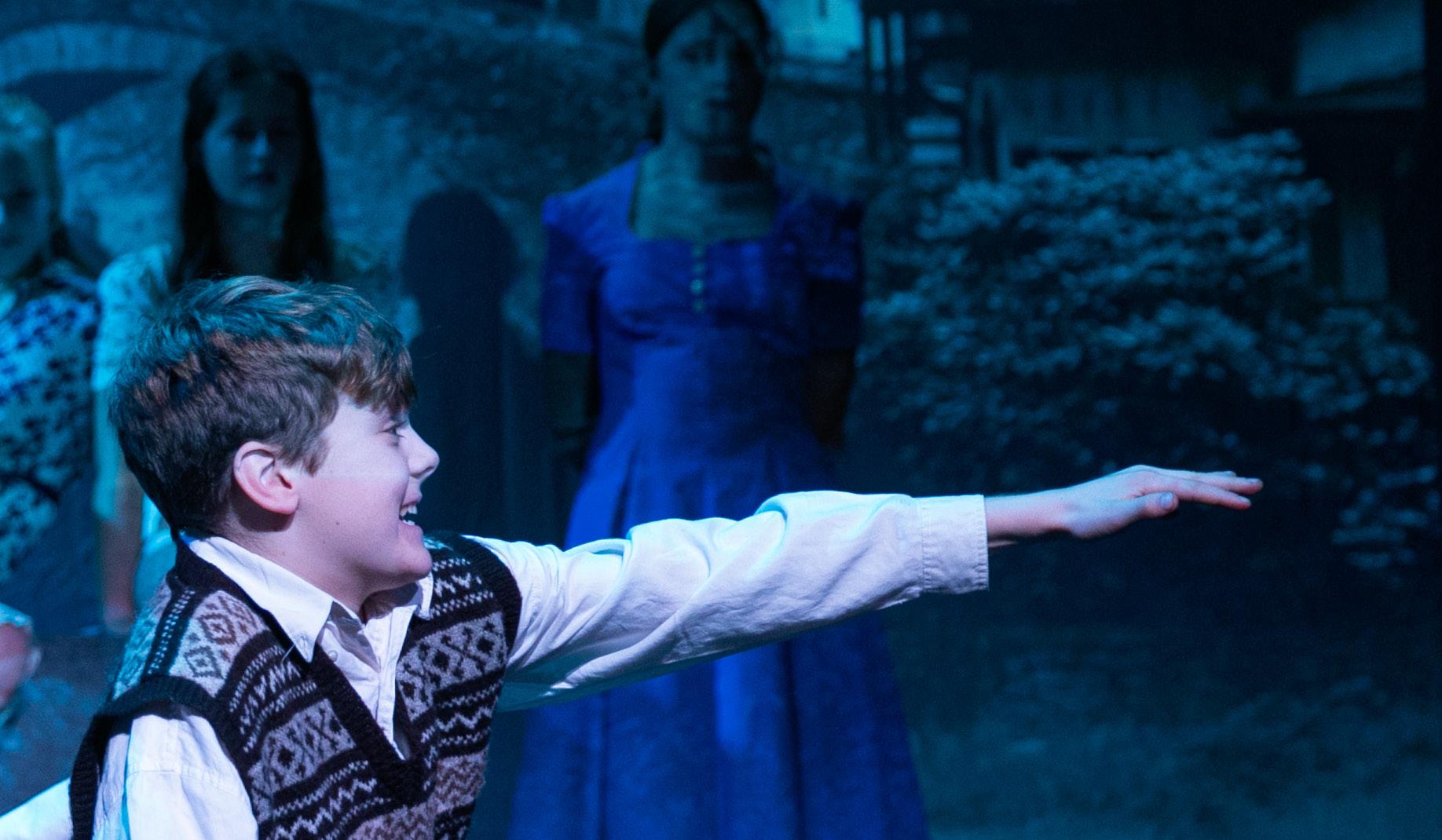

There are so many articles about the importance of a music education — the way it helps develop language, helps with memory, increases coordination, develops emotions, helps with pattern recognition, improves auditory skills, builds imagination, teaches discipline, and so on. It also builds self-confidence, creating a sense of achievement and a desire to improve.
This year in music, we have seen a whole range of activity as usual, from concerts through to masterclasses and competitions. I certainly feel that we have achieved a remarkable amount of music and seeing the performances throughout the year in Montgomery competitions, whether live or remote, in concerts and performances, have really felt that sense of achievement and seen the improvement in confidence and quality. The Chapel Choir was very busy, singing Evensong at Guildford Cathedral and meeting up with recent OW Will Campbell, who played the organ for us. They then had the most amazing and rewarding tour to Germany, following in the footsteps of J. S. Bach. With services in the magnificent Frauenkirche in Dresden and the Thomaskirche in Leipzig, and concerts in the Divi-Blasii Kirche in Mühlhausen and the Stadtkirche St Andreas in Rudolstadt, this was a busy tour musically, but it was the trip to the Bachhaus Museum in Eisenach, as well as the numerous opportunities to play some of the organs in this area, that made the trip so special. It was also a pleasure to take a small group of string players with us, therefore enabling The Heavens are Telling by Haydn to have more vivacity and the wonderful Der Gerechte Kommt um by Kuhnau (arr. Bach) to have more colour. The Chapel Choir returned to Wellington to sing the Mozart Requiem at a moving concert in the GWA (with Crowthorne Choral Society and the Wellington Parent Singers), and then set about preparing for the splendid carol services, including the annual trip to the Grosvenor Chapel in Mayfair. The Lent Term saw a wonderful concert with the acclaimed (welcoming
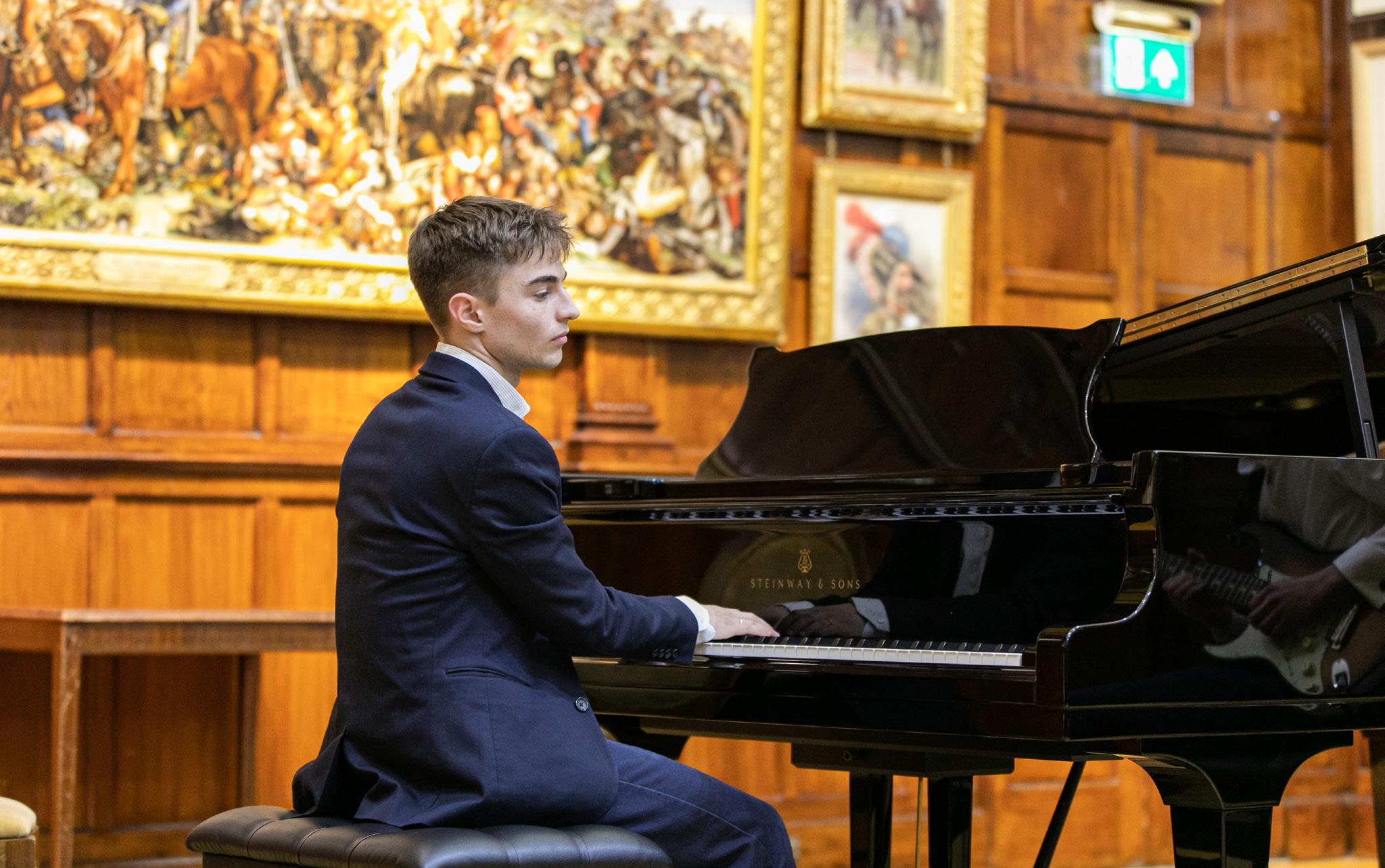

back past Chapel Choir member William Dawes), as well as another Choral Evensong, this time in the chapel at Wellington. They missed out on a trip to Christ Church Oxford to sing Evensong, as well as an opportunity to sing with the Chapel Choir of Eton, due to Covid-19, but their performance of Beati Quorum Via by Stanford for Speech Day will live in our memory. Oscar Farrell (R) and Harriet Cottrell (O), as senior choristers, have led a fantastic group this year along with other Upper Sixth students Amy Gadhia (C), Penny Hilder Jarvis (O) (who takes up a choral scholarship at Worcester, Oxford), Alice Nicoli (C), Nik Lebedenko (S), Sebastian Carroll (R), and Ollie Dewar (M). Their commitment has been exemplary.
Ensemble playing at Wellington has always been strong, and the Symphony Orchestra under the inspirational baton of Natalia Luis Bassa have performed with their customary energy. It has been a busy year, with a recording of the first movement of Vaughan Williams’ English Folk Song Suite, and a space inspired programme including the opening of Also Sprach Zarathustra by Strauss, movements for the Planets Suite by Holst as well as some John Williams favourites (Star Wars and ET of course). Their final video performance for Speech Day took them down a lighter route with a version of Coldplay’s ‘Viva la Vida’, with all members of the orchestra on screen. As always, the Upper Sixth have led through example and excellent performing, seen in the outstanding performances of Nik Lebedenko in the Hummel Trumpet Concerto in Eb, Sebastian Carroll playing the trumpet as a soloist in Piazolla’s Libertango (arranged by our Head of Brass Jonathan Heeley), and Ollie Dewar in the 1st movement of Rachmaninov’s 2nd Piano Concerto, all performed with orchestra. Other Upper Sixth players who have supported the orchestra are Kenshu Tanabe (Hg) on violin, Nicklaus Lau (L) and Penny Hilder Jarvis on viola, Charlotte Huckle (C) and Beatrice Maier (Ap) on cello, Delan Aribigbola (R) on double bass, Lotte Hemke (Hn) on bassoon, and Ben Symons (R) and Daniel Bennett (R) on percussion.
Camerata, under the leadership of our Head of Strings Susie Henwood, have always added a sense of occasion to concerts. Other ensembles we have seen include the Clarinet Choir and Wind Quintet, ably directed by our new Head of Woodwind, Anthony Bailey. Indeed, one of the first ensembles to develop virtual rehearsal technique in the first week of remote teaching at the end of the Lent Term was the Wind Quintet, seen in a photo that has appeared online and in several publications.
The end of term concert in the Michaelmas Term featured a true variety of ensembles of all standards, opening with a collaboration of Schola (our Sixth Form choir) and the Wellington Parent Singers singing OW John Gardner’s Tomorrow shall be my dancing day. The Guitar Ensemble performed arrangements of Yesterday and Raindrops keep falling on my head, and the Wind Quintet performed Denes Agay’s Five Dances. The Clarinet Choir performed Abendlied by Rheinberger and an arrangement of Take on me by A-ha. The Wellington Jazz Orchestra performed some Oscar Peterson, Virtual Insanity by Jamiroquai and Lingus by Snarky Puppy, with a Jazztet rendition of Peanut Vendor as a programme filler. With a second half of lighter music from the Concert Band, as well as a medley of tunes by Wellington College Pipers, this was a truly eclectic mix of music. I am always pleased that we are able to explore such a variety of music throughout the year.
Our Montgomery competitions are a highlight of the year. The three events support the individual, stretching and developing. There are no real winners as the event itself has been more important than who comes away with the prize. James Montgomery sadly passed away in November, and Wellington was represented at his funeral — indeed The Hampshire Chronicle stated the following: James “...supported young musicians at Wellington College and thoroughly enjoyed the annual Montgomery Prize competitions, delighted and often astounded at the standards achieved by the students, he gave them much encouragement and advice.” This year, he would not have been disappointed. The Montgomery Recital Competition, held in January, was exceptionally adjudicated by the teacher and conductor Mark Forkgen, who judged Gabriel Suvini (Pn) on the violin the worthy winner, particularly for his performance of the Recitativo Fantasia from the Sonata in A by Franck. However, this was a night of wonderful playing from all performers, from the complex electric guitar playing of Tom Symonds who started the programme, to the virtuosic playing of Ollie Dewar on the piano. The next two Montgomery competitions were in the Summer Term and students submitted recordings for the heats and then presented short recitals, pre-recorded but presented live before a live adjudication. The Singing Competition was adjudicated by soprano Natalie Clifton-Griffith, and we were welcomed into students’ homes for their performances. Introduced from Waterloo Hall as if live, the evening featured a wonderful evening of recitals. Natalie judged Hugo Williamson’s (R) poised communication and wonderful tone, particularly in his opening Lord God of Abraham from Mendelssohn’s Elijah, to be the winning performance. It was also good to see him being accompanied by his OW brother Tom. The Instrumental Competition was held after half term and adjudicated by viola player Martin Outram — the wonderful variety of performances including viola, violin, piano, clarinet, French horn, cello, classical guitar, and percussion showed the considerable standard from our younger musicians. Andrea Lam (Ap) was awarded the prize for her beautiful, flawless performance of the Wieniawski Polonaise.
Masterclasses this year have been given by our good friend, violinist Remus Azoitei (who has been visiting now for over 10 years); musical theatre MD Alex Aitken; improviser Harry the Piano; French horn player Nicholas Korth, and the Ossian Ensemble, who visited twice to work with our composers. There were a number of masterclasses postponed, and I hope we can continue to make connections with music practitioners next year and continue to learn from them.
We have had two musicals this year, and we continue to enjoy our work with students preparing them for performance and performing in the pit. Hayley Canham’s (O) Medea The Musical was a triumph in so many ways – an outstanding piece of work from an Upper Sixth student who not only wrote the two-hour musical, but also directed, and performed the lead character. The second musical of the year was Sweeney Todd – this famous Sondheim stage work was a resounding success and the memory of the cast coming out into the audience during the interval on the final night to sell meat pies, all in character, was an insight into what we might come to expect from productions in future.
And so to the Summer Term, and the astonishing change to music education. Staff and students alike have had to adapt quickly to rehearsals and instrumental lessons through a camera and on a screen. Students have filmed and recorded from home, parents have cajoled and encouraged, pets have appeared, and then all these separate videos have been put together by a wonderful team of technicians to make the performances that have graced the term. The ‘Eve of Speech Day Concert’ featured three hours of brilliant performances from OWs, students, and ensembles, raising nearly £3,000 for the Frimley Health Charity. The Wellingtones have been exceptional and have recorded three songs, all up online, and the Upper Sixth group of Alice Nicoli, Hayley Canham, Jemima Huxtable (O), Nicklaus Lau, and Ben Symons will be missed and hard to replace. It is heartening that the response from visiting music teachers has been universally positive about their online experiences — students have been on time, have practised, and genuinely seem pleased to be there. Indeed, in a recent discussion with a Head from a primary school in central London, this was made even clearer — she said that the one activity that her students wanted to do on coming back to school was perform music.
Thank you to all our visiting instrumental teachers and to the wonderful full-time team of Susie Henwood, Sean Farrell, Libby Fisher, Anthony Bailey, George de Voil, Nick Burrage, Jonathan Heeley, Al Heslop, and to the team in the office, Sandra Smith, Rachel Setterfield, and Nicola Brown. What an amazing year of music we have had.



